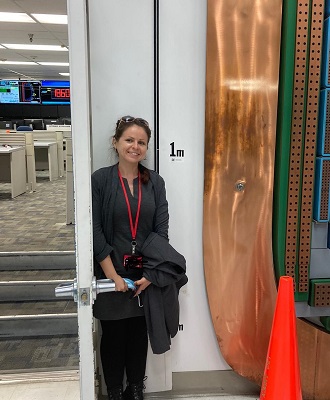Kostadinova ’14 lands mention in Merriam-Webster’s
Evdokiya “Eva” Kostadinova ’14 thought it was a joke. A colleague of Kostadinova’s, Dmitri Orlov, an associate research scientist at the University of California San Diego, sent her a link to Merriam-Webster’s online dictionary for the word “contain.” In the example sentences used to explain the word in context, the dictionary editors chose a passage from a Wired magazine article citing Orlov’s and her work. Here’s an excerpt:
Kostadinova and Orlov are calling for more collaboration between the fusion and space research communities, which both have an interest in understanding plasma reactions—and in developing substances that can contain them.
“I thought the link was somehow Photoshopped until I searched for the word myself and saw it was real. I assume the article got a lot of circulation on the internet and that’s why it was selected for use in the dictionary,” wrote Kostadinova in an email.
The bigger story, after all, is her research – and the fact that the now tenure-track Auburn University assistant professor of physics left her home in Bulgaria to study physics (B.S.) and political science (B.A.) at Furman University via a full scholarship.
“Furman gave me a chance back when I was young and had yet to prove myself. The scholarship changed my life,” said Kostadinova, who would later earn her Ph.D. in physics at Balyor University.

Kostadinova stands next to a cross-section of a life-size prototype of the DIII-D device at the DIII-D National Fusion Facility.
Her work with Orlov includes experiments using the DIII-D National Fusion Facility to test the efficacy and durability of heat shields for space probes and other craft, which encounter uber hot temperatures upon entering planetary atmospheres at high speed, such as in the Galileo mission that launched a probe to Jupiter in 1995 – a probe that barely survived the ordeal.
In the article, Kostadinova, a plasma expert, said, “No aerospace facility on Earth can reach the exact high heating conditions that you experience during atmospheric entry into something like Jupiter.”
So, the two researchers are turning to nuclear fusion to simulate the intense heat and better model ablation (or the degree to which a heat shield disintegrates or vaporizes at high temperatures) for future spacecraft.
At Furman, Kostadinova worked four years as an interlibrary loan student assistant at Duke Library where she was supervised by Elaina Griffith, who took it upon herself to spread the word about the dictionary mention. The two stay in touch.
Previously serving as a research professor at Baylor, and now as a new professor at Auburn, Kostadinova can hardly contain herself.
“The people from the physics department pretty much adopted me. I feel fortunate to be here,” she said.